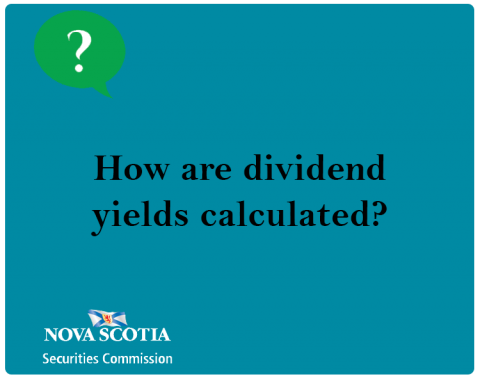Submitted by nsscadmin on

A dividend yield is expressed as a percentage and shows how much a company pays out in dividends each year based on its stock price.
A dividend yield is calculated by dividing the annual dividends per share by the price per share.
Dividend Yield = Annual dividends per share/price per share
For example, let’s say a company with a price per share of $50 pays out an annual dividend of $1.10. In this example we would divide 1.10 by 50 which would give us 2.2%.
A dividend yield can change if the price of stocks rise or fall or if the dividend payment changes.
You may find dividend yields reported differently by different websites or organizations. This may be because they are using different share prices, or dividend payments have changed but one organization continues to report using the old price or old dividend. When searching for dividend yields it helps to know what numbers are used by the organization reporting the yield.
Dividend yield is just one piece of information at your disposal when deciding to invest. Be sure you fully understand what has caused the rise or fall in a dividend yield, and what this could mean for the future price of the investment. Always do your due diligence before entering into any investment and make sure it fits your risk tolerance and financial goals.
